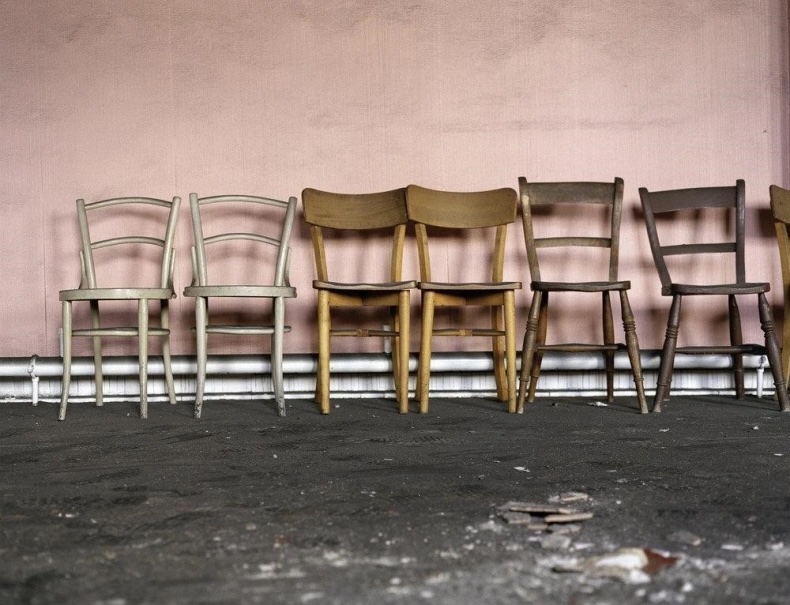What does it mean to know?

Ethna Rose O’Regan, Sinead McCann in collaboration with Dr Louise Brangan
Magdalene Laundries were once vast islands of abandonment marking our Irish social landscape. They are closed now, but their legacies linger. When the gates were locked for the last time in 1996, it was with a whimper not a bang. The secrets were sealed off, and the nation moved on, or so it seemed. But this recent past has come back to haunt the present. In response, there has been handwringing, questioning, asking who-knew-whats and the lamenting if-only-we’d-knowns. Reflecting on this historical reckoning, the author John Banville wrote a short article in the New York Times that suggested a vital question remained unexamined:
“Never tell, never acknowledge, that was the unspoken watchword. Everyone knew, but no one said. Amid all the reaction to these terrible revelations, I have heard no one address the question of what it means, in this context, to know.”
We took this as our prompt, but we wanted to re-orientate the perspective of the question from the past to the present: what it is we know, and do not know, about this history today? The LAB Gallery presents What does it mean to know? a new exhibition by Irish artistsEthna Rose O’Regan and Sinéad McCann (working in collaboration with writer and sociologist Louise Brangan).
McCann and Brangan’s unique collaboration comprises two new artworks: ‘NO BABIES WERE BORN THERE.’, a large scale sculptural text work, and ‘I’m still there’, a light and sound installation. We do not present the Laundries as some kind of historically sequestered event that took place far away, back then, and over there. Instead, both works invite people to consider some of the narrative and statistical fictions that guide how we make sense of the Laundries today. We invite the viewer to reflect upon the question: What does it mean to remember?
O’Regan’s photographic series, ‘After Magdalene’ (2006-2009), was made in the last of the Magdalene Laundries on Sean McDermott Street, which officially closed in 1996. O’Regan first gained access in 2006. The sense of despair and isolation which was palpable everywhere, seemed to permeate the very wallpaper and floorboards of this building. Her images of the remnants and detritus that were left behind, evoke a feeling of an indescribable sadness of so many lives disavowed. With this work, she wishes to create a space for reflection and urge people to never forget our past so that this abuse of power towards Irish women will never happen again
Ethna Rose O’Regan is a photographic artist from Galway. She received her BA (Hons) in Photography from the Dublin Institute of Technology (now TU Dublin) in Ireland. Her work deals with time, memory and place where the intimacy of making a picture is just the beginning of a process that can last years. She has produced photographic series in Ireland, America, Ukraine and Germany and has exhibited them internationally. ‘Beyond Reach’, her first photobook, was published by Kehrer Verlag in 2019. Her practice ranges from the personal to the social and political, identifying moments where these states coincide. www.ethnaoregan.com
Dr Sinéad McCann (she/her) is a multidisciplinary socially engaged artist, committed to investigating and responding to social inequality through her art practice. Recent works include: Our Place, (2024) an accessible immersive sound, light, and sensory installation at RHA gallery Dublin. Explores identity, belonging and human rights with adults with intellectual disabilities. A collaboration with Saint John of God Services. A national tour will take place in 2025. The Ireland we Dreamed of; (2024) a one-hour multidisciplinary performance for theatre presented at Smock Alley, in collaboration with Dr Louise Brangan. Exploring what it was like to live in the shadow of the Magdalene Laundries and Mother and Baby Homes in 1970’s Ireland. The Trial, (2019) a video and sound site-specific installation, Old Courtroom Kilmainham Jail Dublin. A collaboration with the School of History UCD and community organisation The Bridge project. Exploring healthcare and human rights in the Irish prison system. A national tour took place in 2019.
Dr Louise Brangan is an Irish academic and writer, her work concerns justice and punishment. In particular, she researches what societies consider good order, and how far they will go to achieve it. Her work has been funded by the Fulbright Commission, British Academy and Leverhulme. In 2023 she was named by the BBC as a New Generation Thinker, considered to be “ten of the UK’s most promising arts and humanities early career researchers”. She has made a radio essay for the BBC, and with Sinéad McCann created the dance theatre piece, The Ireland we Dreamed of. In 2026 her book, The Fallen: Magdalene Laundries and Ireland’s Legacy of Silence, will be published by Penguin Random House
Acknowledgements
We would like to express our gratitude to: Dublin City Arts Office and the Lab Gallery. The Arts Council (O’Regan); Economic Social Research Council, UK (McCann and Brangan). Ray Yeates, Dublin City Arts Officer. Dr. Margarita Cappock, Curatorial Advisor, assisted by Clara McSweeney. Dr. Tony Bates, trauma informed advisor for exhibition. Ciara Murnane, technical advisor and exhibition designer for McCann and Brangan. Jim Butler from Inspirational Arts for his printing expertise. Alan Magee, art technician. Sheena Barrett, Miriam de Búrca, Benjamin de Búrca, Valerie Connor, David Monaghan
Monday to Saturday 10am – 6pm. We are currently closed on Sundays.
